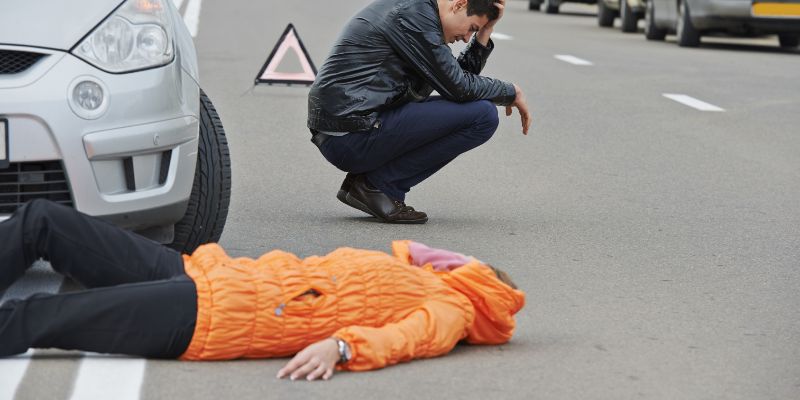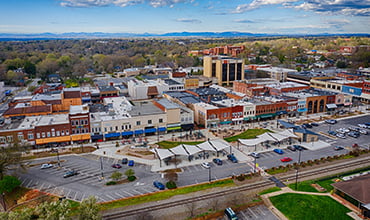Taylorsville Pedestrian Accident Lawyer
Taylorsville Pedestrian Accident Attorney
Pedestrian accidents are unfortunate and distressing incidents that can take many forms. They can happen just about anywhere people use cars. These incidents can result in trauma, steep medical bills, and significant injuries for the pedestrians involved. When such disasters befall you or a loved one, having the support and guidance of a Taylorsville pedestrian accident lawyer can help you hold the at-fault party accountable.
The highly qualified Taylorsville pedestrian accident attorneys at Law Office of Lyndon R. Helton, PLLC, are prepared to help clients navigate the complicated process of filing a personal injury claim. Our firm offers actionable guidance to empower them at every step. Our team works to secure the maximum compensation that injured pedestrians deserve.

A Closer Look at NC Pedestrian Accidents: Common Causes
Pedestrian collisions and other roadway mishaps affecting pedestrians can occur (or be made worse) due to a variety of factors, including:
- Distracted Driving – With cell phone use now ubiquitous throughout all segments of society, many states, including North Carolina, are cracking down on distracted driving. Motorists who strike a pedestrian while operating a smartphone or are otherwise distracted may face additional liability. They may even be subject to criminal charges in certain circumstances.
- Impaired Driving – Driving under the influence of drugs or alcohol can lower a motorist’s reaction speed, increasing the potential for catastrophic car accidents, including those involving pedestrians. This is another situation where criminal charges might apply on top of your civil suit for personal injury.
- Speeding and Reckless Driving – The rules of the road exist for a reason, and the posted speed limit is more than a polite suggestion: it’s the law. Those who fail to obey important motor vehicle operation laws put themselves at increased risk for an accident–and increased liability, should one occur.
- Failure to Yield or Obey Other Signage – Some crosswalks in busy downtown areas or during special events or times of day explicitly give pedestrians the right of way. There can be serious legal liability attached if a motor vehicle operator ignores the signage and strikes a pedestrian in one of these zones.
- Technology Failures – With the rapid rise in assisted driving modes and “driverless” car features in certain automobiles, some people are simply becoming too reliant on their cars’ safety and convenience features to do their driving for them. While most of these features are actually designed to make roads safer, this only works when these tools are employed responsibly. Over-reliance on driving tech potentially puts pedestrians and cyclists at greater risk than ever before.
North Carolinian pedestrians have the law on their side. Traffic laws in our state emphasize the importance of yielding to pedestrians and following all posted roadway instructions. There can be significant consequences for drivers who are found to be at fault for failing to follow these laws in both criminal and civil court. These penalties range from temporary license suspension to multimillion-dollar personal injury settlements, depending on the specific circumstances of the case and the level of damages incurred.
North Carolina Pedestrian Rights in Legal Context
While every case in Taylorsville, NC is unique, there is a long list of different statutes and legal principles that could potentially apply to an injurious incident involving a pedestrian. The single most important piece of legislation regarding pedestrian accidents in North Carolina is Section 20-173 of the state’s General Statutes.
This important law is divided into three sections. Here’s a summary of what each part does:
- The first section applies to any area that doesn’t have traffic control signals installed (e.g., stoplights, walk signals, etc.) It gives pedestrians broad protections when crossing the street, not just at marked crosswalks but also at any intersection where it would be reasonable to cross the street and where it is not specifically prohibited. By law, North Carolina motorists have to yield to pedestrians in these situations, even coming to a full stop if necessary to allow their safe passage.
- This part of the law applies to any situation where a motorist has stopped to allow a pedestrian to cross the roadway. In keeping with Part A, this could be at a marked crosswalk or an unmarked intersection. Part B states that any motorist coming up on this situation from the rear is strictly prohibited from passing the first (stopped) vehicle and must safely come to a stop behind it and wait. A motorist who strikes a pedestrian while breaking this law could face serious penalties in criminal and civil actions.
- The last piece of the law applies to motorists who are exiting a parking lot, driveway, or alley. When doing so, they must yield the right of way to any pedestrians or bicyclists.
North Carolina law mandates that drivers on the state’s roadways must:
- Exercise due care.
- Follow all traffic laws.
- Obey posted signs.
- Be prepared to yield to foot traffic at all crosswalks and intersections.
These comprehensive laws (and the associated penalties) exist to deter drivers from colliding with pedestrians, cyclists, and other vehicles.
Understanding Contributory Negligence in North Carolina
One thing that makes pedestrian accidents and other car crashes in North Carolina unique is that it is one of only a few states that still adhere to the principle of contributory negligence. Contributory negligence means that if the pedestrian is found to be even partially at fault for their own injury, they can be completely barred from recovering damages in court.
Contributory negligence is one of the reasons why seeking qualified legal counsel becomes so important in pedestrian collision cases. A good lawyer can gather the necessary evidence and implement a legal strategy to demonstrate, beyond a doubt, that you were the innocent victim in your accident rather than a contributing factor. Failing to prove this fundamental point can derail your claim before it ever starts and prevent you from receiving any compensation at all.
FAQs
Q: What Is the Main Cause of Pedestrian Accidents?
A: The NHTSA reports that most pedestrian accidents occur in crosswalks. These incidents mainly occur due to poorly marked signage and signals at these locations. Without clearly marked directions, drivers and pedestrians may fail to yield the right of way, causing sudden collisions between the two. Pedestrians who cross open roads and at night also account for a significant number of pedestrian accidents.
Q: Can a Pedestrian Be at Fault in NC?
A: Yes. In fact, determining fault is a key part of personal injury cases involving automobiles in North Carolina. Because the state is one of the last remaining contributory negligence states in the nation, it is of utmost importance for injured pedestrians to have sufficient evidence to completely exonerate themselves of any contributory role in their own injury.
If a North Carolinian pedestrian is found to be even partially at fault for a car-on-pedestrian collision, they can find themselves barred from suing for their injuries. This is why it is highly recommended for injured pedestrians to enlist the help of a qualified personal injury attorney to help them develop a comprehensive legal strategy before ever attempting to file a claim.
Q: What Is the Most Common Injury for Pedestrians?
A: Around one-third of all pedestrian injuries involve damage to the neck or head, making this the single most common type of pedestrian injury. Regardless of what part of the body is impacted, pedestrian injuries commonly involve soft tissue damage, with serious musculoskeletal damage also being possible.
Every accident is unique, however, and when you consider the force and violence inherent to the act of an automobile striking a pedestrian, it’s no surprise that pedestrian accidents can result in serious internal and external injury to any part of the body. It is important to seek medical attention immediately after such an accident, both to treat any injuries and to obtain documentation of them for a future claim.
Q: Do Pedestrians Always Have the Right of Way in NC?
A: Pedestrians in North Carolina have broad legal protections while using sidewalks, crosswalks, and even when crossing the street at intersections with no marked crosswalks. Broadly speaking, if it makes sense to cross the street there, you probably have a legal right of way to do so. This does not mean that pedestrians can never be at fault, however. Pedestrians who fail to follow traffic laws themselves may come up against North Carolina’s contributory negligence principle and be unable to seek compensation for their injuries.
Law Office of Lyndon R. Helton, PLLC – Powerful Legal Help for Injured Pedestrians in Taylorsville and Beyond
Being struck by a car or truck is an extremely traumatic experience, and serious injuries requiring a long recovery period make this even more challenging. You need compensation for your injury so that you can support your family and make ends meet while you heal.
The legal process involved in seeking restitution for injured parties after a pedestrian accident can be challenging and tedious. Thankfully, you don’t have to go through it alone. Law Office of Lyndon R. Helton, PLLC, is your trusted partner in seeking justice and fair compensation for the injuries and losses you have suffered due to being hit by a car or truck. Contact us today to begin the process with a confidential and compassionate consultation.

